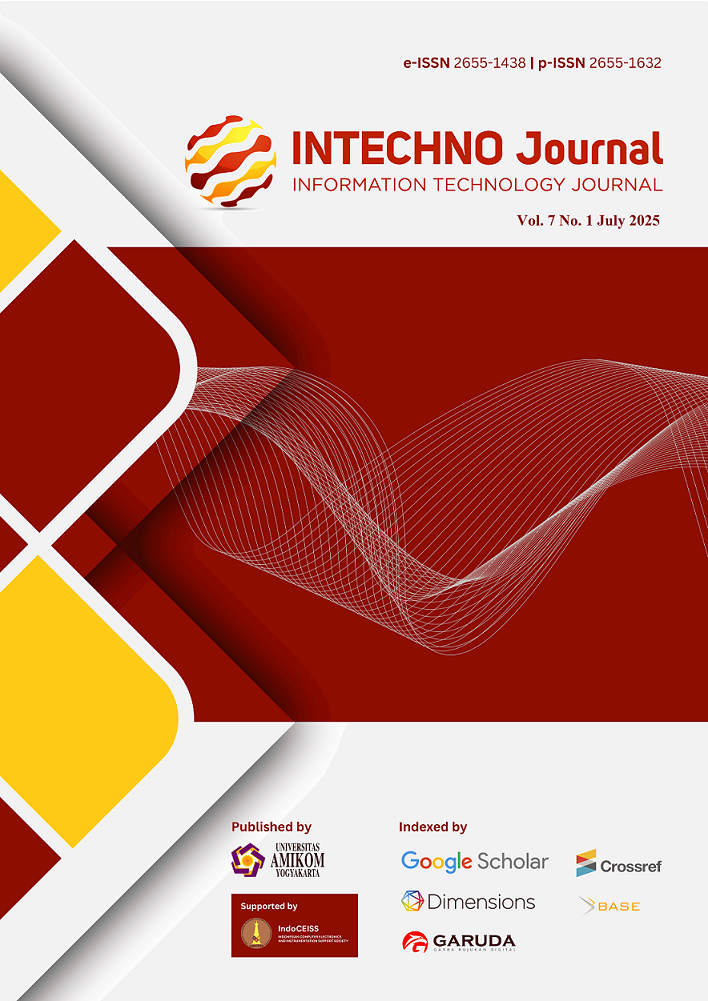Comparative Analysis of Live Action Film Production Management Using Critical Path Method (CPM) Versus Conventional Production Processes
DOI:
https://doi.org/10.24076/intechnojournal.2025v7i1.2019Keywords:
Film Production, Project Management, Critical Path Method, Optimization, SchedulingAbstract
The production of the film “Kinah dan Redjo”, by Universitas Amikom and MSV Sinema, has been completed, prompting researchers to conduct an analysis and evaluation of the production management applied. The focus of this study is on time and cost, which are critical factors supporting film production. An extended production duration was identified as a challenge, as it reduces effectiveness and leads to cost overruns. Therefore, this study aims to compare project management strategies for successful planning and control, using both conventional methods and the Critical Path Method (CPM). This analysis is expected to yield faster project completion and establish efficient, productive standards for future productions. The conventional approach indicated a total production duration of 681 days, comprising 120 days for pre-production, 18 days for production, and 551 days for post-production. Upon analysis using the CPM method, the total duration was reduced to 459 days, including 113 days for pre-production, 152 days for production, and 191 days for post-production. The graphical comparison of methods shows significant cost fluctuations across each production phase with the conventional method, especially increased costs during production despite the shorter duration. Conversely, the CPM method demonstrates more controlled and measurable durations and costs. This study underscores the importance of cost optimization, standardization of the Work Breakdown Structure (WBS), and hybrid modeling to enhance efficiency in dynamic film projects. Furthermore, this analysis serves as a foundational reference for the architectural planning of future applications incorporating artificial intelligence (AI) integration. AI has the potential to accelerate scheduling, optimize resource allocation, and streamline cost management and production design, thereby improving overall project efficiency.
References
R. A. Purnomo, Ekonomi Kreatif Pilar Pembangunan Indonesia, vol. 53, no. 9. 2016.
F. Rahmawati, “Pilar-Pilar Yang Mempengaruhi Perkembangan Ekonomi Kreatif Di Indonesia,” Econ. Educ. Entrep. J., vol. 4, no. 2, pp. 159–164, 2021, doi: 10.23960/e3j/v4i2.159-164.
J. Oka and D. Kartikasari, “Evaluasi Manajemen Waktu Proyek Menggunakan Metode Pert Dan Cpm Pada Pengerjaan ‘Proyek Reparasi Crane Lampson’ Di Pt Mcdermott Indonesia,” J. Appl. Bus. Adm., vol. 1, no. 1, pp. 28–36, 2019, doi: 10.30871/jaba.v1i1.1257.
A. K. Munns and B. F. Bjeirmi, “The role of project management in achieving project success,” 1996.
T. Kadang, P. W. Hidayah, K. Simarmata, N. A. Putri, and K. Krisvinus, “Analysis of Consultant Building Project Management Using the CPM (Critical Path Method),” J. Bus. Manag. Econ. Dev., vol. 2, no. 03, pp. 1169–1179, Jun. 2024, doi: 10.59653/jbmed.v2i03.891.
B. Montazeri, “Comparing Critical Chain Project Managemenet with Critical Path Method: A Case Study Recommended Citation.” [Online]. Available: https://digitalcommons.wku.edu/theses
Z. T. Taner, A. Soylu, and Z. Y. Ilerisoy, “Comparison of the Benefits of CPM and PERT to Project Partners on Different Projects,” 7th Int. Proj. Constr. Manag. Conf., pp. 1–17, 2022, [Online]. Available: https://www.researchgate.net/publication/364753742
I. G. N. Sunatha, T. I. Praganingrum, I. M. Nada, N. I. Made, and M. Florenzia, “Perbandingan Penjadwalan Proyek Antara Metode Konvensional Dengan Aplikasi Microsoft Project (Studi Kasus: Pembangunan Gedung Dua Lantai Sdn 1 Pedungan) I Gede Ngurah Sunatha 1) , Tjokorda Istri Praganingrum 2) *, I Made Nada 3) , Ni Made Meilan Florenzia,” pp. 399–407, 2024, [Online]. Available: http://journal.unmasmataram.ac.id/index.php/GARA
M. A. Perdana and R. P. Sari, “Optimalisasi Waktu Pelaksanaan Proyek Konstruksi Rumah Tinggal Menggunakan Metode CPM (Critical Path Method) dan PERT (Program Evaluation and Review Technique),” J. Media Tek. dan Sist. Ind., vol. 6, no. 2, p. 116, 2022, doi: 10.35194/jmtsi.v6i2.1944.
M. A. Zakariah, V. Afriani, and K. H. M. Zakariah, “METODOLOGI PENELITIAN KUALITATIF, KUANTITATIF, ACTION RESEARCH, RESEARCH AND DEVELOPMENT (R n D).,” pp. 157–165, 2020, [Online]. Available: https://books.google.co.id/books?id=k8j4DwAAQBAJ
P. Eriksson and A. Kovalainen, “Qualitative Methods in Business Research,” Qual. Methods Bus. Res., no. January 2016, 2011, doi: 10.4135/9780857028044.
F. Ahlemann, F. Teuteberg, and K. Vogelsang, “Project management standards - Diffusion and application in Germany and Switzerland,” Int. J. Proj. Manag., vol. 27, no. 3, pp. 292–303, 2009, doi: 10.1016/j.ijproman.2008.01.009.
L. Wales, Complete Guide to Film and Digital Production. 2015. doi: 10.4324/9781315664507.
M. Vanhoucke, Project management with dynamic scheduling: Baseline scheduling, risk analysis and project control. Springer Berlin Heidelberg, 2012. doi: 10.1007/978-3-642-25175-7.
S. Globerson, “Impact of various work-breakdown structures on project conceptualization,” Int. J. Proj. Manag., vol. 12, no. 3, pp. 165–171, 1994, doi: 10.1016/0263-7863(94)90032-9.
A. Herzanita, “Implementation of standardized wbs (work breakdown structure) for time and cost performance. (study case: Building project PT. X, Kuala Tanjung, Sumatera Utara),” in IOP Conference Series: Materials Science and Engineering, Institute of Physics Publishing, May 2019. doi: 10.1088/1757-899X/508/1/012049.
S. R. Anderson Earl B. Hales, “Critical path method applied to research project planning: Fire Economics Evaluation System (FEES),” Gen. Tech. Rep., p. 12 p., 1986.
J. E. Kelley and M. R. W. Alkert, “Critical-Path Planning and Scheduling,” Proc. East. Jt. Comput. Conf., pp. 160–173, 1956, [Online]. Available: www.computerhistory.org
M. Vanhoucke, Project Management with Dynamic Scheduling. 2013. doi: 10.1007/978-3-642-40438-2.
C. Hendrickson and T. Au, Project management for construction?: fundamental concepts for owners, engineers, architects, and builders. Carnegie Mellon University, 27982.
R. J. Compesi, Video Field Production and Editing. 2019. doi: 10.4324/9780429505935.












